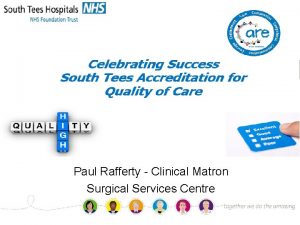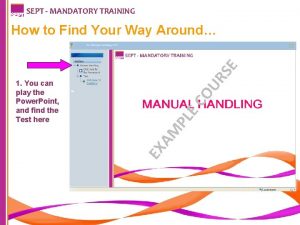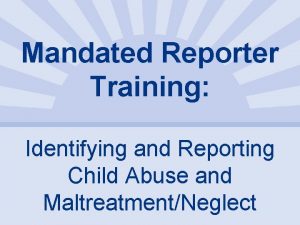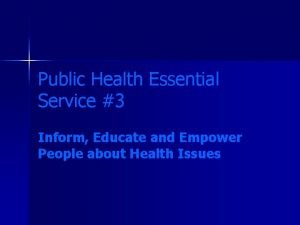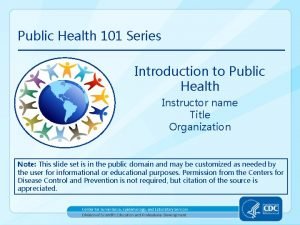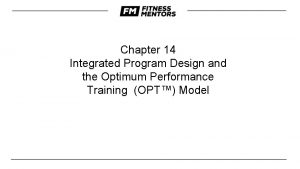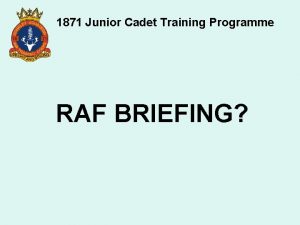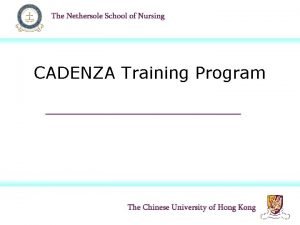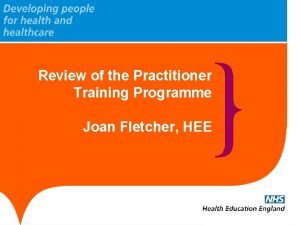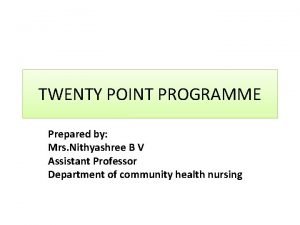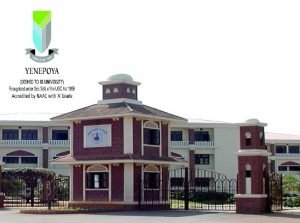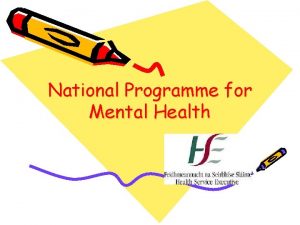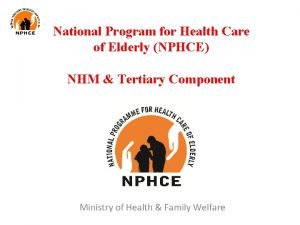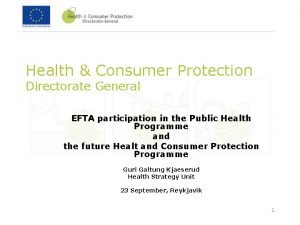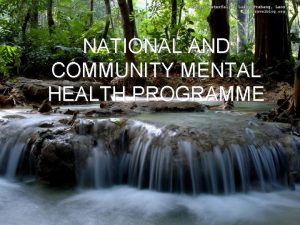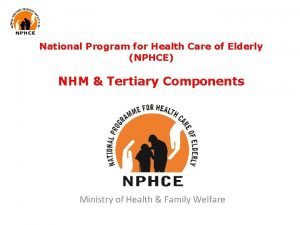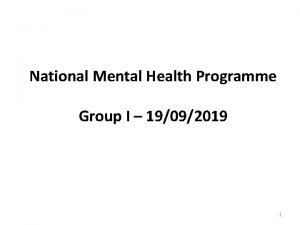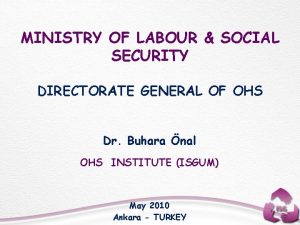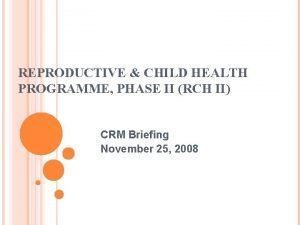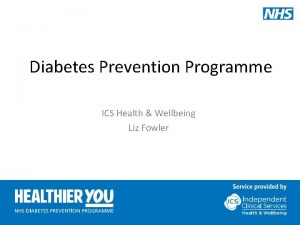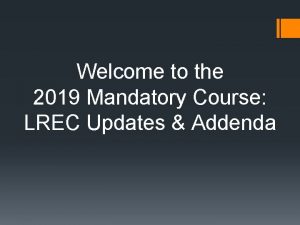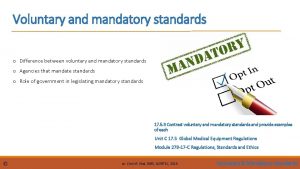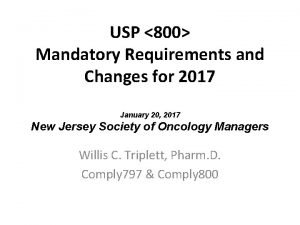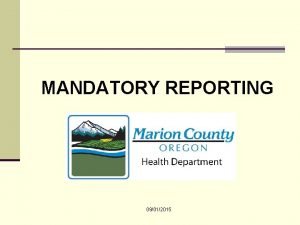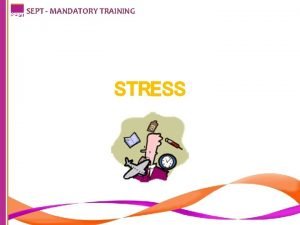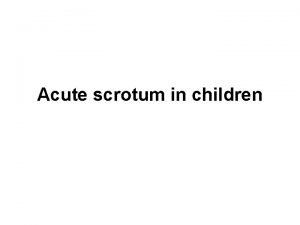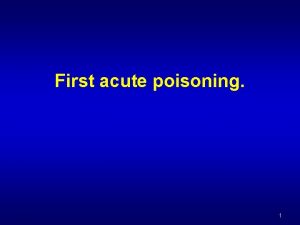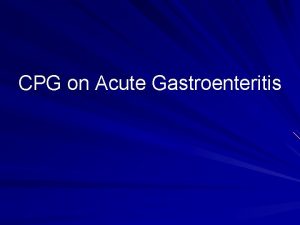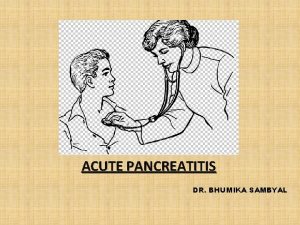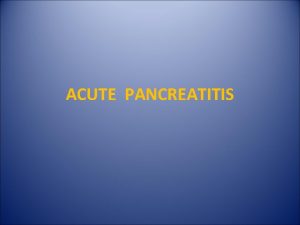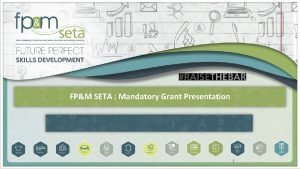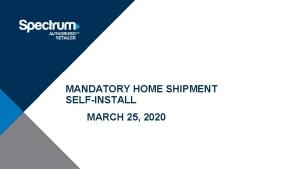Core Mandatory Training Programme Acute Services Division Health






































- Slides: 38

Core Mandatory Training Programme Acute Services Division Health and Safety Service including Violence Reduction Awareness for Acute Services Staff

Objectives • Examine the key Health and Safety related legal duties of employers and employees • Have an understanding of the Health & Safety management system • Explain the need for incident, recording, reporting and investigation • Increase awareness of hazards at work • Increase awareness of how to control work hazards • Introduce the requirement for Risk Assessments within H&S legislation • Develop an understanding of what should be assessed • Explain the concept of quantifying/qualifying risk KSF CORE DIMENSION : 1 Communication, 2 People & Personal Development, 3 Health, Safety & Security & 4 Service Improvement

Why Manage Health & Safety? • • • Increased skill level amongst employees Reduced risk of injury or ill health Better working conditions More efficient work processes Reduced costs and lost time from injury, absence and property damage • A reduction in compensation claims leading to reduced contributions to CNORIS • All this contributes towards improved patient care • Meet our legal requirements

Aspects of a Positive Health & Safety Culture • H & S is on the agenda of all management meetings • H & S is given equal priority to other functions in management meetings • Directors and senior managers have involvement in incident investigation and H&S inspections • Short, medium and long-term corporate plans include health and safety issues • Where H&S and Violence & Aggression training has been identified, all employees including the most senior should attend

Health & Safety at Work etc Act 1974 Section 2 Employer requirement: Section 7 Employees are required to: “It shall be the duty of every employer to ensure, as far as reasonably practicable, the health, safety and welfare of all his employees” “…take reasonable care for the health and safety of himself and other persons who may be affected by his acts or omissions. ”

Duties of Employers • To provide and maintain safe systems of work (e. g. procedures & equipment) • To provide information, instruction, training and supervision to ensure the health and safety at work of all employees and others • The provision and maintenance of a safe working environment i. e. adequate facilities and arrangements for the welfare of employees at work

‘Reasonably practicable’ Cost Money, time & effort Risk Injury & ill health

Management of Health and Safety at Work Regulations 1999 • Extends the general duties under the HSW etc Act 1974 and require formal systems to implement Health and Safety including: • Written assessments of risk • Written arrangements for risk control • Planning for emergencies (Health and Safety Service Managers have Exec. Authority under the Boards Health and Safety Policy) • Co-ordinating safety plans with others e. g. partners, contractors • Providing information to all those affected and training to employees • Arrangements for competent persons to meet the requirements

Enforcement of legislation • There are 2 groups who enforce the regulations: • Health and Safety Executive (HSE) The enforcing authority for work areas such as hospitals • Environmental Health The enforcing authority for food preparation areas within hospitals

Enforcement Action that may be taken following an enforcing officer's visit: - • • Nothing A verbal request for action A written request for action An Improvement Notice A Prohibition Notice A court summons Fee for intervention Directorates/ Sectors to cover costs

The Health and Safety Policy • Under Section 2(3) HSW etc Act 1974, every Health and Safety policy must contain the following three sections: Ø a general statement of intent; Ø an organisation section detailing the organisation for carrying out the policy; Ø an arrangements section detailing the arrangements for carrying out the policy. • NHSGGC Health & Safety Policy is available on Staff. Net and a copy should be kept in the Health and Safety Management Manual For Managers

NHSGGC Health & Safety Framework • Chief Executive is Accountable for Health and Safety. • H. R. Director has responsibility for Health & Safety on behalf of Chief Executive • In Acute Services Chief Officer has responsibility for implementation • Responsibility is cascaded through General Management structure

Role of Health & Safety Service • An advisory service which includes specialist teams: Violence Reduction, Health & Safety, Occupational Hygiene, and M&H • Three strands; Acute, Facilities and Partnerships/Mental Health • Develop policies and procedures, support and audit their implementation • Provide training to all levels of staff • Undertake incident investigations • Develop and monitor Action Plans

Health & Safety Governance • NHSGGC Health & Safety Forum reports to Risk Management Group • Directorate/ Sector Health & Safety Forums/Committees report to Health & Safety Forum • Some Directorates have other Forums/Committees for particular specialties e. g. Laboratories, Facilities • Sub groups: Reducing Violence Group

Health & Safety Management Manual • Forms part of the management system that NHS GGC uses to manage Health & Safety • Each area/department manager has the responsibility for managing Health & Safety • Everyone has a responsibility

Accidents / Incidents Definitions • Accident – ‘any unplanned event that results in injury or ill-health of people, or damage / loss to property, plant, materials or the Environment’ (Health & Safety Executive) • Incident – • includes near misses • Ill health – • in the work context is defined as: • any illness, disability or other physical problem • that is caused or made worse by one’s work

Accidents / Incidents “Near-misses” • A “near-miss” is commonly described as an accident where people escape injury. • Why report? Studies have shown that for every 1 major injury, there are: - 1 • 10 minor injuries; 10 • 30 incidents resulting in damage; 30 • 300 incidents with no injury or damage 300 [Practical Loss Control Leadership, Bird & Germain]

Why prevent accidents & ill -health? There are 3 main reasons for preventing: • Moral we owe a reasonable 'duty of care' to others at work • Economic insured and uninsured costs • Legal both criminal and civil

Accidents / Incidents Primary causes Immediate or primary causes are often grouped into unsafe acts and unsafe conditions. Unsafe acts and unsafe conditions are caused by: • the environment; • inherited attitudes or values (bad habits); • human error.

Accidents / Incidents Root causes The underlying conditions that lead to unsafe acts and unsafe conditions e. g. • Inadequate management controls • Lack of standard operating procedures • Inadequate supervision, instruction and training • Human factor

Accidents / Incidents RIDDOR (Reporting of Injuries, Diseases and Dangerous Occurrences Regulations 2014) • Certain types of incident are reportable to the HSE under these regulations e. g. • • Over 7 Day injury Major Injury Dangerous Occurrence Disease

Roles within Datix. Web Role Tasks Staff type Needs Training? Must login? Reporter Completes DIF 1 form Anyone No No Reviewer/ Deputy Reviewer Reviews data entered by Reporter, links contacts, marks incident as Reviewed Team Lead / Ward Manager Yes Approver/ (optional) Deputy Approver Checks investigation and actions are satisfactory, Approves and closes incident Senior line manager – usually Lead Nurse or CSM Yes Secondary Approver Oversight of incidents in area of responsibility Senior manager - GM, Head of Nursing, Clinical Director Yes Investigator(s) Can be named to allow view of any incident. May update/add details Any Datix user as required Possibly Yes

The Datix Incident Lifecycle NOTE - 28 Days - Incident Reported to Final Approval Incident entered to Datix by Reporter (No login required. Reviewer notified by email of incident Reviewer to Review incident and approve contacts. (Login required) Further investigation by Approver (Login required) Incident Approved (Login required) Role responsible for action New incident Added to Datix Incident In Holding Area Awaiting Review Reporter Reviewer requires more info Incident Still Being Reviewed 1) Reviewer 2) Investigators to be added Incident Awaiting Final Approver Incident has Final Approval Status (appears in reports) Approver

RISK ASSESSMENT • Identify the hazards • Decide who might be harmed and how • Evaluate the risks and decide on precautions • Record findings and implement. • Review assessment and update.

DEFINITION • HAZARD. Something with the potential to cause harm. • RISK. The realisation that someone will be harmed and how serious. • RISK ASSESSMENT. Identifies and quantifies the hazards present indicating the measures required to eliminate or control the risks.

Risk Matrix

Further Action • Take remedial action when the control methods are insufficient to prevent harm • Escalate any outstanding risks through the management structure

Most Common Reported Incidents Violence & Aggression Slips, Trips and Falls Incident Types Sharps Manual Handling

Definition Violence and aggression against staff is defined as: “Where persons are abused, threatened or assaulted in circumstances relating to their work, ”

Incident types further examples • Threatening or abusive language • Derogatory racial or sexual remarks. • Malicious allegations relating to members of staff, other patients or visitors. • Offensive sexual gestures or behaviours. • Abusing alcohol or drugs in hospital/Drug dealing. • Wilful damage to hospital property/Theft. • Threats or threatening behaviour/Violence.

Risk Reduction Responses Three Levels of response - Primary - Secondary - Tertiary

Primary Response Proactive Prevention Action taken to prevent conflict situations arising or to reduce their likely frequency. Organisational Level: Policies & Guidelines Safe Systems of Work eg GMAWS Risk Assessments Training Care Plans Individual Level: Understanding risks. Complying with safe practice guidance. Putting training into practice. Preventative action also includes reporting & recording in order to learn from what happened and prevent recurrence

Secondary Response To de-escalate conflict situations and prevent physical violence. Typically involve the use of interpersonal skills, defusing & calming strategies, or team tactics to de-escalate and normalise a situation

Tertiary Response Physical & Post Assault: Action taken when violence is occurring and after it has occurred, to prevent or reduce the potential for physical and psychological harm. May involve applying emergency procedures, exit strategies and in certain environments physical intervention skills. Post assault incident reporting will provide feedback for review of primary preventative measures in a continuous improvement cycle

Conflict Management Training Courses • E-Learning Module Managing Conflict & Challenging Behaviour - Low risk areas • Half-day Conflict Management - Staff working in areas where they are in contact with the public & are at risk from violence and aggression • Full day Conflict Management – as above but designed for community workers • 1 Day Conflict Management/Physical Intervention Staff in high risk areas

Sanctions • Every member of staff has the right to call the Police • Yellow & Red card system under the Standards of Behaviour Protocol • Aggressive person can be excluded from NHS GG&C hospitals.

Further support Services • • Occupational Health Legal Services acute Victim information & Advice Service Victim Support Search for staff support services on staffnet for contact details for the above • Trade Unions • GPs

Health and Safety Home page
 Core mandatory part 3
Core mandatory part 3 Ward accreditation
Ward accreditation Mandatory training definition
Mandatory training definition Normal bruising areas on a child
Normal bruising areas on a child Core functions and essential services of public health
Core functions and essential services of public health Public health 101
Public health 101 Cardiac output trained vs untrained
Cardiac output trained vs untrained Opt model phases
Opt model phases Raf training programme
Raf training programme Cadenza training programme
Cadenza training programme Practitioner training programme
Practitioner training programme Inner core and outer core
Inner core and outer core Compare and contrast the crust mantle and core
Compare and contrast the crust mantle and core Layers of earth from most dense to least dense
Layers of earth from most dense to least dense Core rigidities
Core rigidities Long division and short division
Long division and short division Synthetic division of polynomials
Synthetic division of polynomials Division
Division What is synthetic division
What is synthetic division The main objective of 20-point programme is to_______. *
The main objective of 20-point programme is to_______. * What are the health services provided by school
What are the health services provided by school Reproductive and child health programme definition
Reproductive and child health programme definition National child health program in india
National child health program in india Mental health programme
Mental health programme Nphce launch date
Nphce launch date Minus desk in community medicine
Minus desk in community medicine National health programme
National health programme National health programme
National health programme Sharp in public health dentistry
Sharp in public health dentistry Objectives of national mental health programme
Objectives of national mental health programme Nphce logo
Nphce logo National mental health programme
National mental health programme Health and safety conclusion
Health and safety conclusion Conclusion of national mental health programme
Conclusion of national mental health programme Reproductive and child health programme phase 1
Reproductive and child health programme phase 1 Ics health & wellbeing
Ics health & wellbeing Lrec purchase agreement
Lrec purchase agreement Mandatory standards examples
Mandatory standards examples Is usp 800 mandatory
Is usp 800 mandatory

